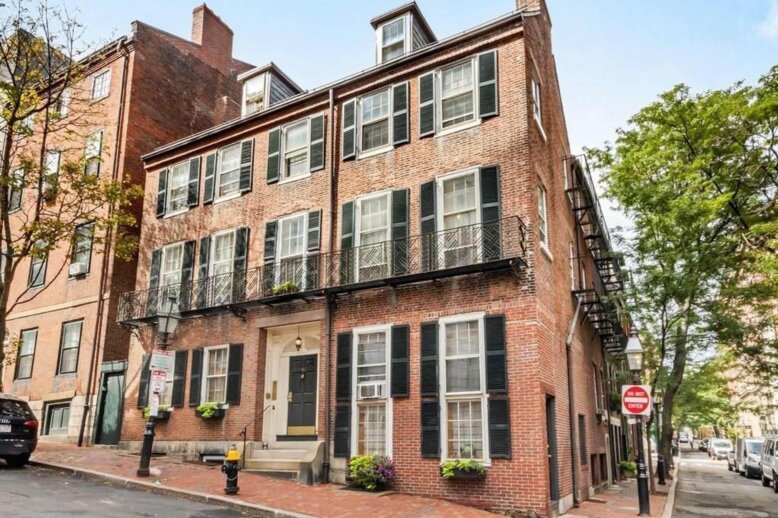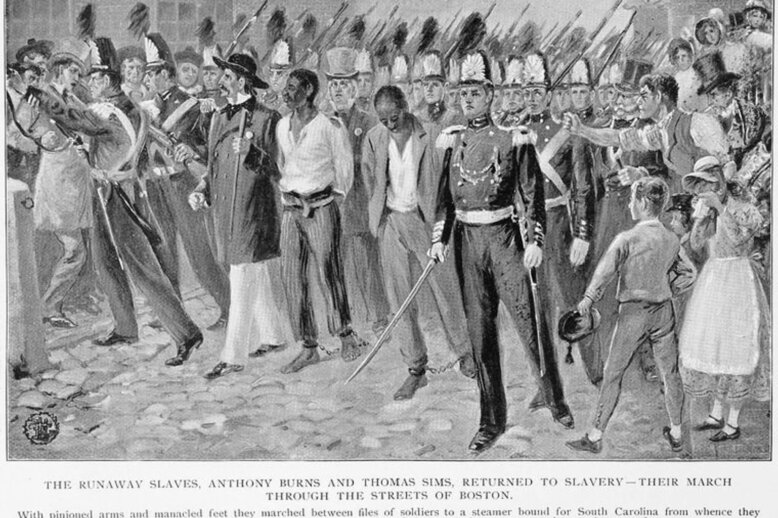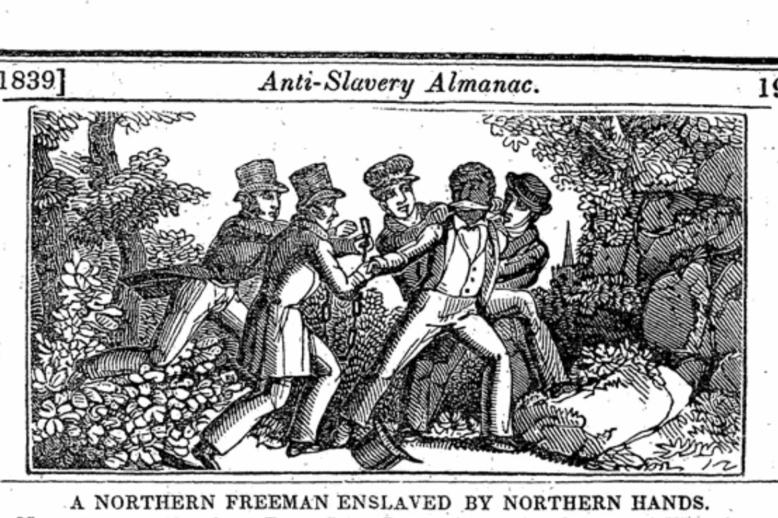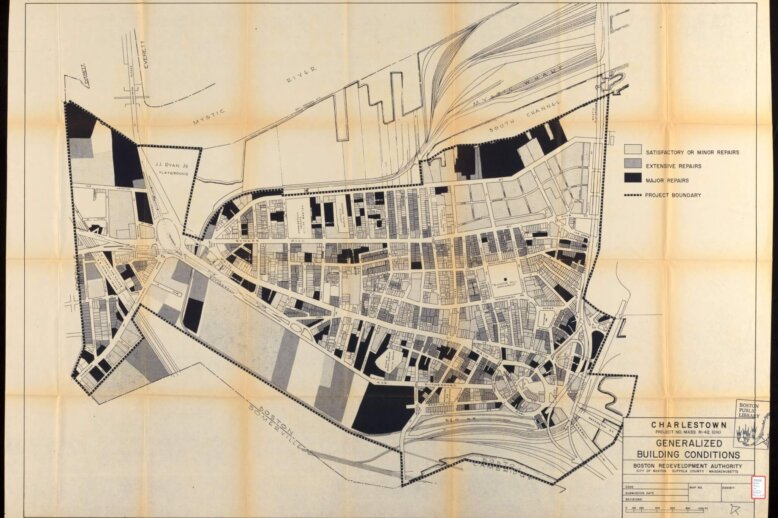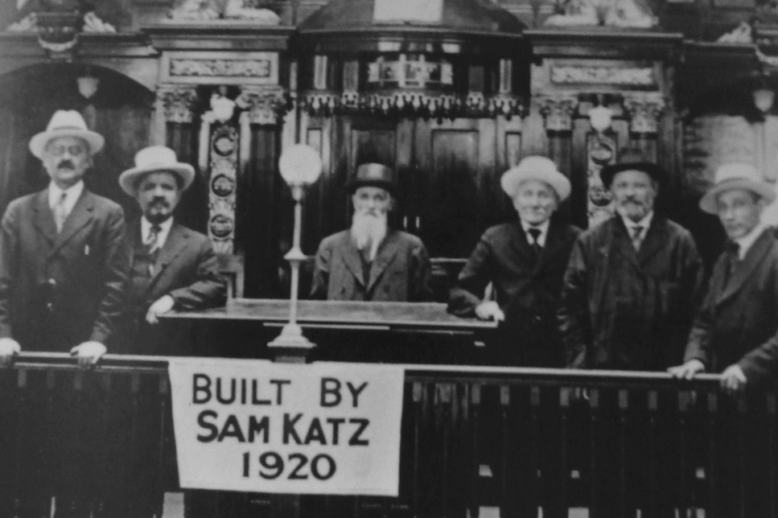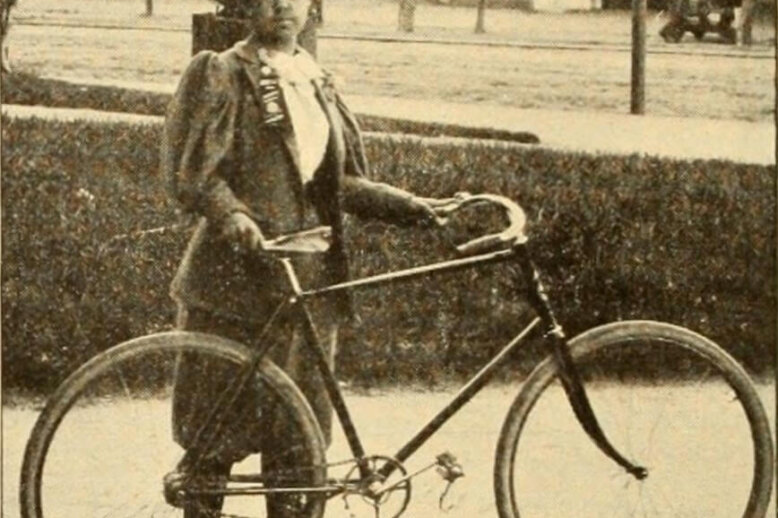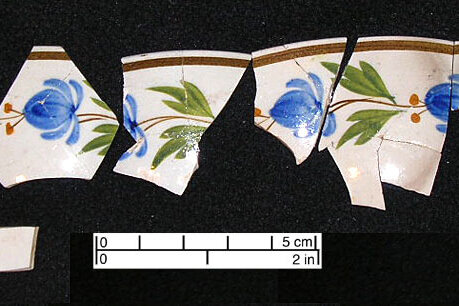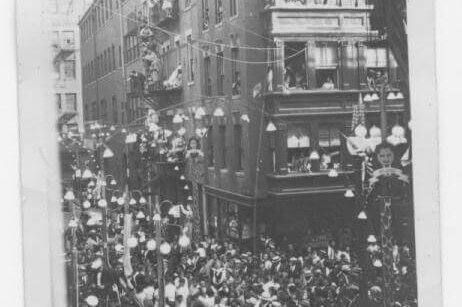Era
Organizational category for historical articles
Salome Merritt: Suffragist and Doctor of Beacon Hill Salome Merritt MD (1843-1900) was a pioneering female doctor, suffragist, and activist who lived for several decades on Beacon Hill. Merritt was dedicated to improving the lives of her neighbors through scientific education, direct aid, and advocating for social and political change. A descendent of an old…
The Fugitive Slave Laws in Boston: Part 2, 1850–1855 This article, part 2 in a series on fugitive slaves in Boston, explores the new legislation passed during the lead up to the Civil War which expanded the reach of the fugitive slave law, and the reactions of Bostonians to slave catchers targeting residents. Part 2…
This article, part 1 in a two-part series, explores the documentary history of the legalization of slavery in the United States, and the creation of federal laws prioritizing the rights of slaveholders over basic human rights. Part 1 surveys Massachusetts’ legalization of slavery in 1641; its abolishment of slavery in 1783; the Fugitive Slave Act of 1793; and how abolitionist organizations in Boston defied the Fugitive Slave Laws in order to help escaped enslaved people defend their freedom.
Boston’s urban landscape has been dramatically shaped by urban renewal initiatives of the mid-20th century. Among the most notable examples are the West End and Charlestown—two historic neighborhoods with starkly divergent urban renewal results. While the West End became the poster child for urban renewal’s destructive potential, Charlestown had a very different outcome only a few years later. This article examines these contrasting urban renewal experiences, highlighting their implementation approaches, community responses, and lasting impacts on Boston’s urban fabric.
At its peak, the vibrant West End neighborhood was home to approximately 40-45 synagogues, reflecting the thriving Jewish community that once defined the area. Today, only the Boston Synagogue remains as the sole continuously-operating Jewish house of worship in the neighborhood.
Below is an online, self-guided version of our “West End Women” walking tour. Print it out or keep it digital, and put on your best walking shoes to explore the histories and stories of women from Boston’s West End.
Domingo Williams was an attendant and caterer who lived with his family in an apartment in the African Meeting House from 1819 to 1830. A 2005 archaeological dig behind the African Meeting House, in conjunction with mentions of Williams in local and national newspapers, help to illuminate Williams’ prosperous catering career, his activist involvement in Boston’s Black community, and his time living in one of the city’s most important Black social-religious centers.
Joseph Caruso’s novel The Priest (1956) vividly captures daily life for the West End’s Italian immigrant population in the mid-twentieth century, drawing on actual events, historical landmarks, cultural rituals, and economic challenges which shaped the West End community for generations.


